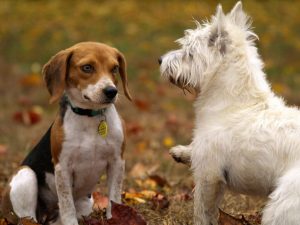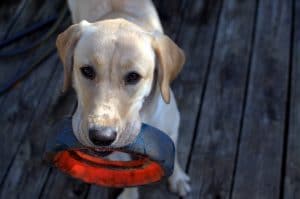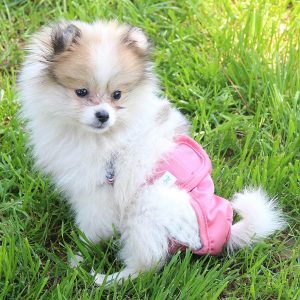
Dogs have a sensitive period in which socialization can occur. In this period, the dog is open to accept new and different people, animals, objects, and noises and see how those relate to her: which bring good consequences and which do not. The more positive experiences your puppy has during this period, the less fearful she will be when facing new things in the future. This sensitive period ends relatively soon – at about 12-16 weeks (depending who you are asking). Socializing your dog during the first 3-4 months is the most important behavioral vaccination you can give to your puppy. After 16 weeks, and as time passes, it becomes harder and harder to change your dog’s perception regarding what is safe and what is dangerous.

I believe that solving the disagreement between vets and behavior people involves choosing a method of moderation. We should socialize our puppies to the best of our abilities and still be responsible enough to avoid locations and animals that may carry disease. You should take your dog outside as much as possible in the first months. At the same time, you should avoid places like dog parks, neighborhood parks, and other places where many unknown dogs are or were present. If needed, hold your puppy in your lap when you reach areas that you suspect may have a chance for spreading diseases. Consult your veterinarian about your specific puppy – some puppies may be sensitive to diseases for several reasons and you many want to be more careful with them.

Never push your puppy into situations he fears. Compelling your puppy to “enjoy” situations he fears and letting him deal with the situation on his own can be harmful. If your puppy is afraid when exposed to the noise of a school bus for example, do not force him to be close to many school buses with engines running. Getting your puppy used to the noise requires gentle and gradual desensitization. If you have a fearful puppy, consult a trainer or dog behavior expert to help you solve the problem. The sooner you act, the easier and cheaper solving the problem would be.
Use the socialization table in appendix B to monitor your puppy’s socialization process.
Dogs and kids:

Dogs bite children for many reasons but, in general, the underline reason is often fear. Children tend to move swiftly and with fast motions. A child can easily run towards a dog and hug him – putting the dog in a defensive situation without even knowing it. Hence, all interactions between dogs and children should be supervised by adults and regardless of the dog’s past fondness of children. During the sensitive period and while socializing puppies to children and babies, we must make sure that all interactions are of positive nature to the puppy. This way, puppies can learn to associate children with positive consequences and later on in life, they may agree to “suffer” more handling of strange kids.
At the same time, we must take time and educate our children about dogs. We must teach them how to gently approach and handle a dog and how to act cautiously around strange dogs. By socializing both dogs to children and children to dogs, we decrease the chances of dog bites occurring and decrease the severity of the bites.
Step by Step:
The following process uses babies as the example. The process is very similar with any other subject.
- Choose two to three sites, noises, people, or animals that you want you puppy to get used to each day.
- Prepare tasty treats and take them with you during the day. Make sure the treats are very attractive to your puppy.
- Take your puppy to places where babies are present – daycares, public parks, etc. sit with your puppy in that area and every time the puppy sees a baby give a treat. Continue for about 10-20 repetitions.
- In case a baby comes close to your puppy, make sure the baby’s parent is holding him. If your puppy is comfortable, allow the baby to gently interact with the puppy and give the puppy treats generously. Make sure the baby doesn’t hurt the dog or frighten him. If that happens, stop the interaction.
- Repeat steps 3 and 4 several times a day for several weeks.
- Record a crying baby and play the sound when your dog is eating. Start with a low enough volume that your puppy feels comfortable with. (Many puppies will not have any problem with a high volume).
- Go visit friends who have a baby and let the puppy meet the baby for short durations (5 minutes). Supervise the interaction and make sure it is gentle and that both baby and puppy are enjoying themselves. If you see someone unhappy or fearful, stop the interaction.
- Do not force your puppy to be close to babies if he is scared of them. If you force the puppy into a fearful situation you might increase the fearfulness. Reinforce the dog in a distance in which he feels comfortable and gradually decrease the distance.















